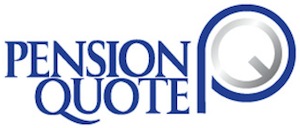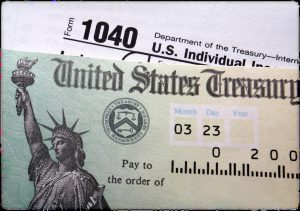CPA Guide
FREE Guide for Certified Public Accountants
 At PensionQuote®, we believe seeing is believing. Seeing it in writing is more powerful than hearing a verbal explanation from our plan specialists. That is why we have designed proprietary materials for financial professionals to get all the details they need to understand these plans… and we make those written guides available free of charge.
At PensionQuote®, we believe seeing is believing. Seeing it in writing is more powerful than hearing a verbal explanation from our plan specialists. That is why we have designed proprietary materials for financial professionals to get all the details they need to understand these plans… and we make those written guides available free of charge.
Our easy-to-use guides provide fast track training to help Advisors and Certified Public Accountants involved in the process of establishing retirement plans. Our printable guides provide a thumbnail sketch of the complexities behind these specialized tax-advantaged plans.
We know you are experts in the field of government tax rules but in order to save you the time of doing your own research on a potential plan, we want to make sure the latest tax codes, regulations, and other critical data are readily available to you.
The PensionQuote® specialists are available from start to finish for case consultation, sales support, installation and administration.
Click here to download our Certified Professional Accountant (CPA) Guide
CPA Quick Guide to Defined Benefit Pension Plans
1) Defined Benefit Plan Overview
a. Plan Structure – may include 3 elements: The main plan is a Defined Benefit Pension plan. Additional contributions and benefits may include a 401(k) deferral and a profit-sharing plan.
b. The Defined Benefit plan is subject to a required actuarial certification each year and the inclusion of a Schedule B with the annual F-5500 filing with the IRS.
c. The plan is a qualified plan pursuant to IRC Sec. 401.
d. Contributions are determined initially and in future years by the actuary taking into account census data provided by the employer, plan asset information, and other IRS actuarial factors.
e. Employer contributions to the plan are income tax deductible as “ordinary and necessary business expenses” pursuant to IRC Sec. 162.
f. Employer contributions to the plan are not taxable to a participant (including owner-employees) at the time of contribution.
g. Benefits are taxable to the participant as ordinary income at the time of distribution (unless rolled over to a successor qualified plan).
2) Income Issues
a. Benefits and resulting plan contributions for business owners are based on earned income subject to an IRC Sec. 415 maximum limit of $275,000 (2018 limit). Specific definition of eligible compensation depends on the type of business structure.
- For S and C-Corps. Eligible compensation is defined as W-2 income. In most cases, a business owner should take W-2 income of at least $275,000 to achieve a maximum plan benefit/contribution while maintaining the lowest possible employee cost. If there are no nonowner W-2 employees, the actuary may calculate a lesser W-2 sufficient to meet the business owner’s objectives. The pension contribution will be IN ADDITION to the W-2 income taken. For example, if the client wishes to contribute $255,000 to the pension, his TOTAL income from his business must be at least $530,000 ($275,000 of W-2 PLUS the $255,000 pension contribution equals $530,000).
- For Partnerships. Partners take K-1 distributions. To be eligible as compensation for a pension plan, K-1 distributions must be subject-to FICA/Social Security taxes (“earned income”). K-1 distributions are in addition to the pension contribution. For example, a partner who desires a $200,000 plan contribution may need $275,000 of K-1 income for a total income of at least $475,000.
3. For Sole Proprietors
i. “Compensation” on which the owner’s benefit/contribution is based is defined as “Net Schedule C earned income reduced by 50% of the Self-Employment tax and further reduced by all employer contributions”.
ii. Note that a pension contribution may NOT create a loss in a Sole Proprietorship. For example, a Sole Proprietor has a plan contribution of $150,000. They would have to show $443,243 of total Net Schedule C income to meet plan compensation requirements and have sufficient cash flow to fund the desired plan contribution ($443,243 Schedule C income after expenses less $33,243 (7.5%=1/2 Self-employment tax) leaves $410,000, of which $260,000 is compensation and $150,000 is the deductible plan contribution).
3) Accounting for the Plan
a. C-corporations – The plan contribution is taken as a corporate deduction on the corporate tax return, F-1120, line 23.
b. S-Corporations – The plan contribution is taken on the S-Corporation tax return, F-1120-S, line 17.
c. Partnerships – The deduction for contributions on behalf of nonpartner employees is taken on the partnership return, F-1065, line 18. The deduction for contributions on behalf of partners is reported on the partner’s F-K1, box 13, Code R, and is taken on the partner’s F-1040, line 28.
d. Sole Proprietors – The plan contribution for participating nonowner employees is taken on the Schedule C, line 19. The deduction for the owner’s contribution is taken on F-1040, line 28.
4)Timetable – Implementation & Administration the Plan
1. Implementation
A plan must be adopted with a Trust document executed prior to the close of the business owner’s tax year. For example, a business operating on a calendar year must have their plan document executed prior to December 31 of the year they intend to initiate their plan.
- The TPA/actuaries will:1) Prepare Plan documents.
2) Letter of Determination requested for all plans.
3) Complete annual compliance testing for all plans including determination of eligibility, calculation of benefits/contributions.
4) Prepare annual Form 5500s for all plans in the program (pension, profit sharing and 401(k)).
5) Annual Actuarial certification Schedule B for defined benefit plans.
6) Annual conference calls to discuss client status:
a. Owner’s income change?
b. Changes in census (new hires? Terminations?)
c. Impending changes in the business?
2. Annual Administration
After the close of the business tax year:
1. The actuary will request updated census data from the business owner to determine newly eligible employees, terminations, and to calculate the contribution for all eligible participants.
2. The actuary will request asset valuation from the business owner and /or their advisors.
3. The actuary runs the plan anniversary valuation and provides the contribution amount to the business owner.
4. The business owner makes the balance of their annual plan contribution no later than the date they file their business tax return.



